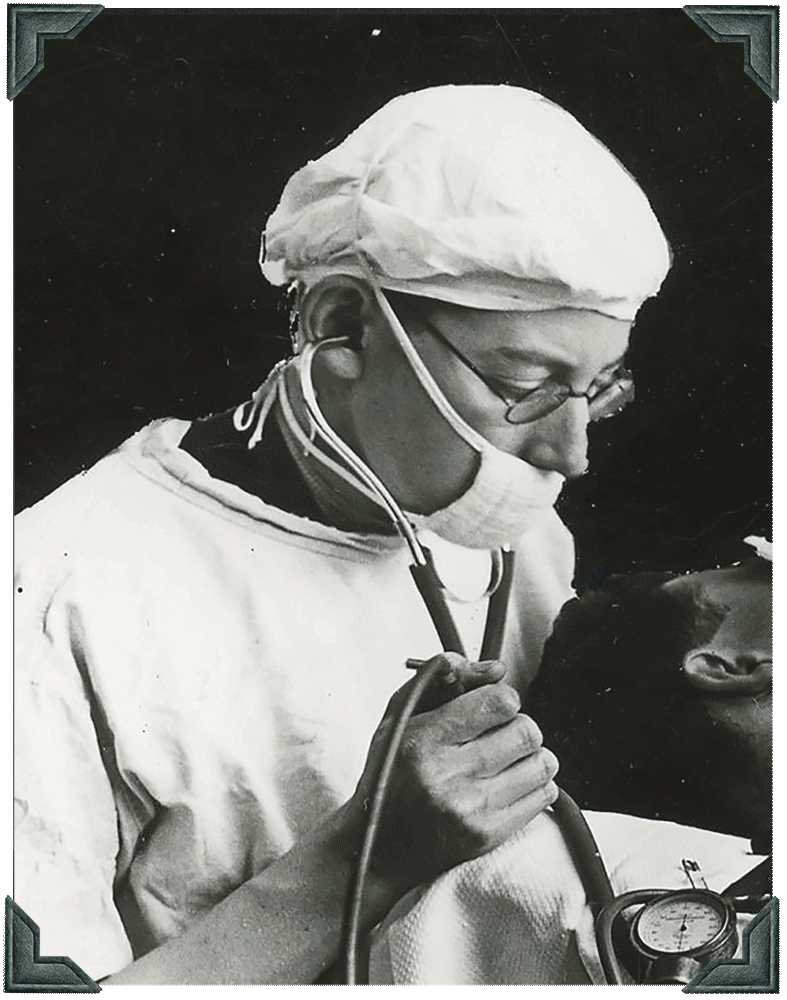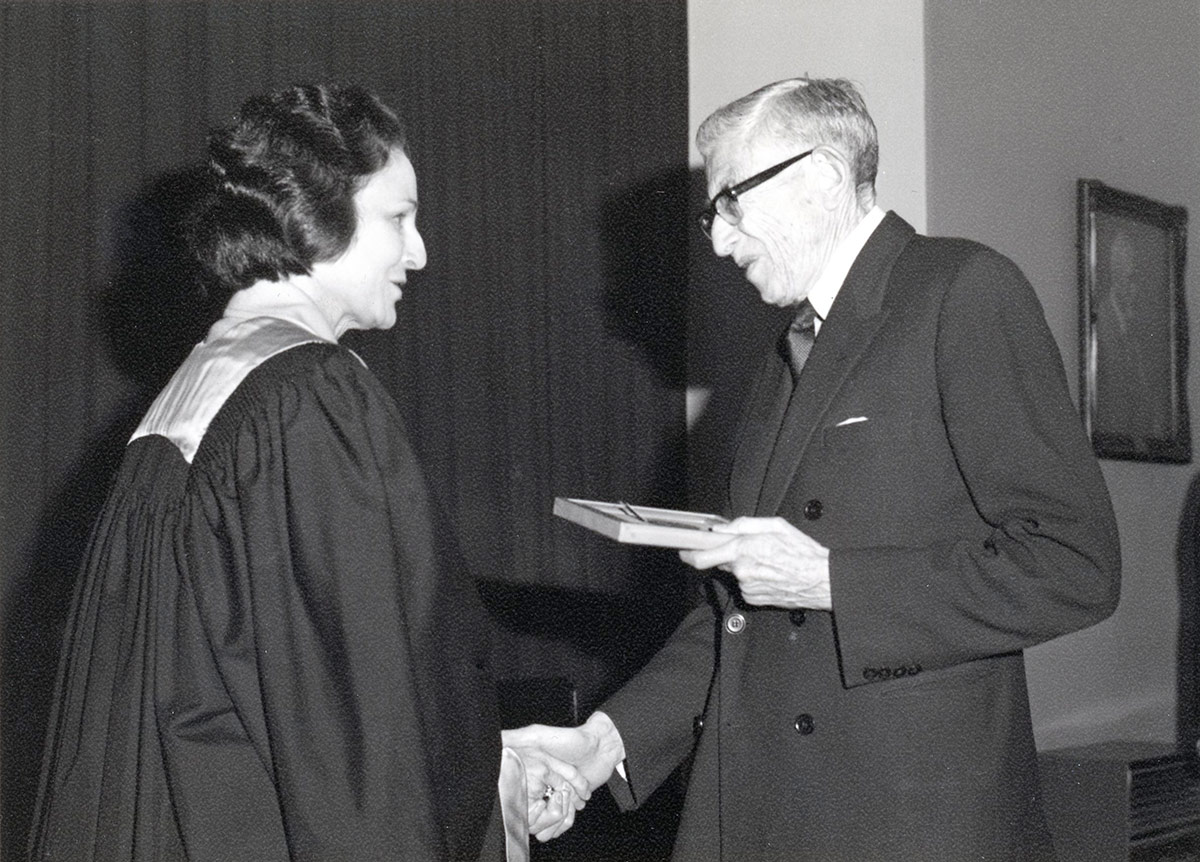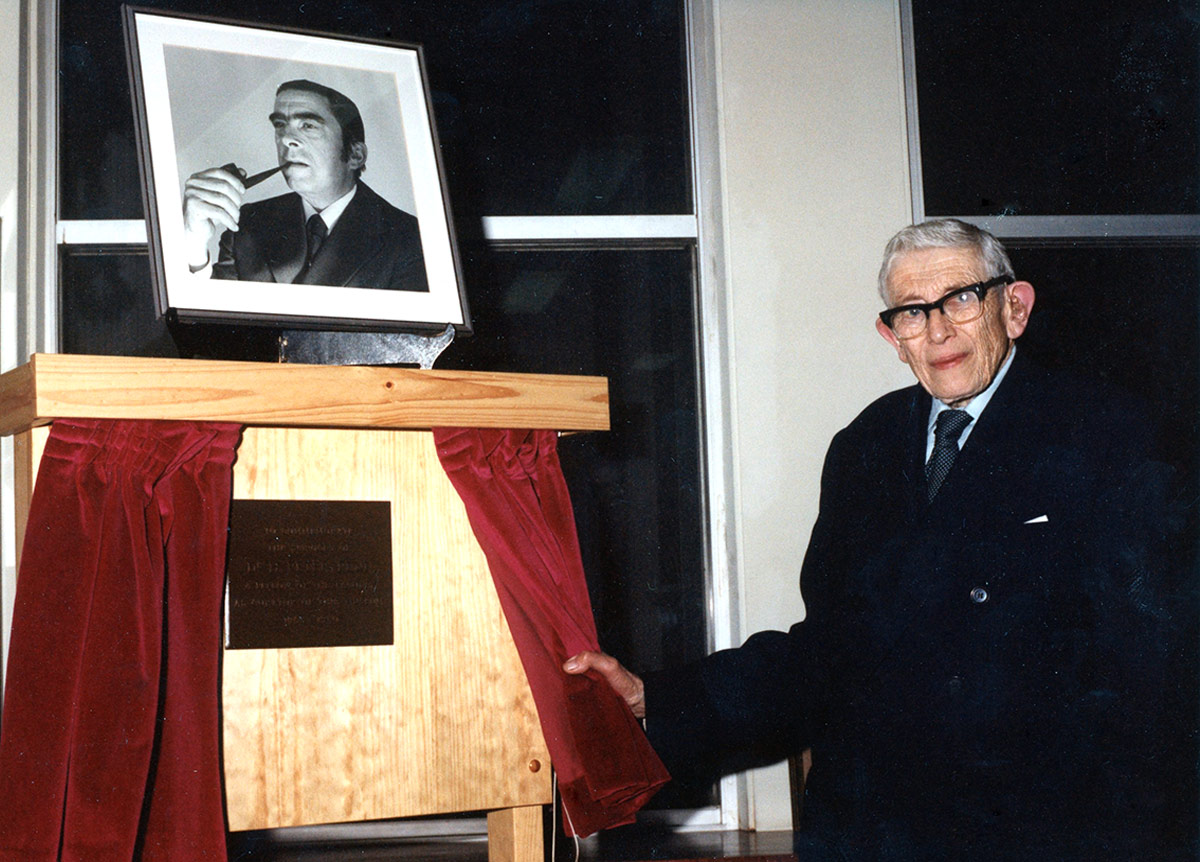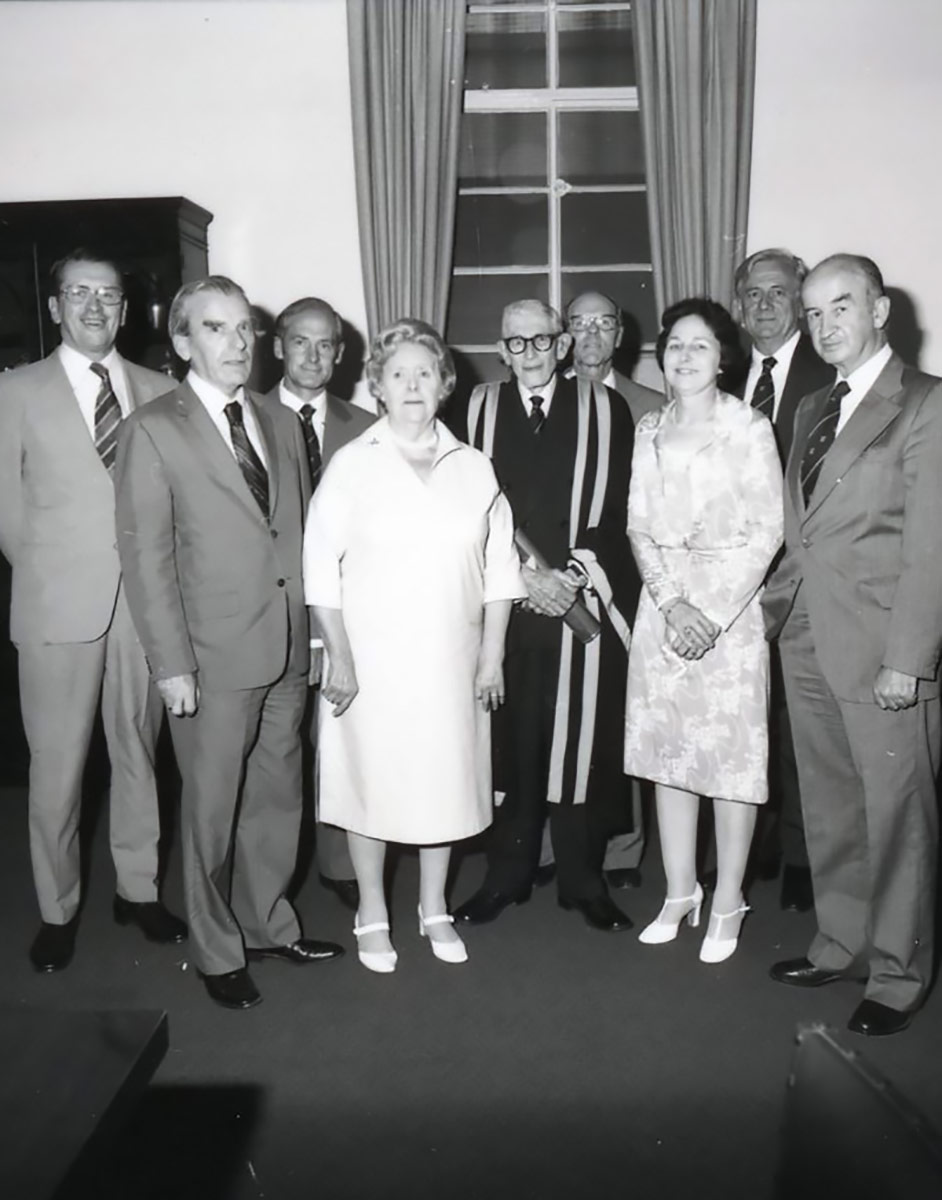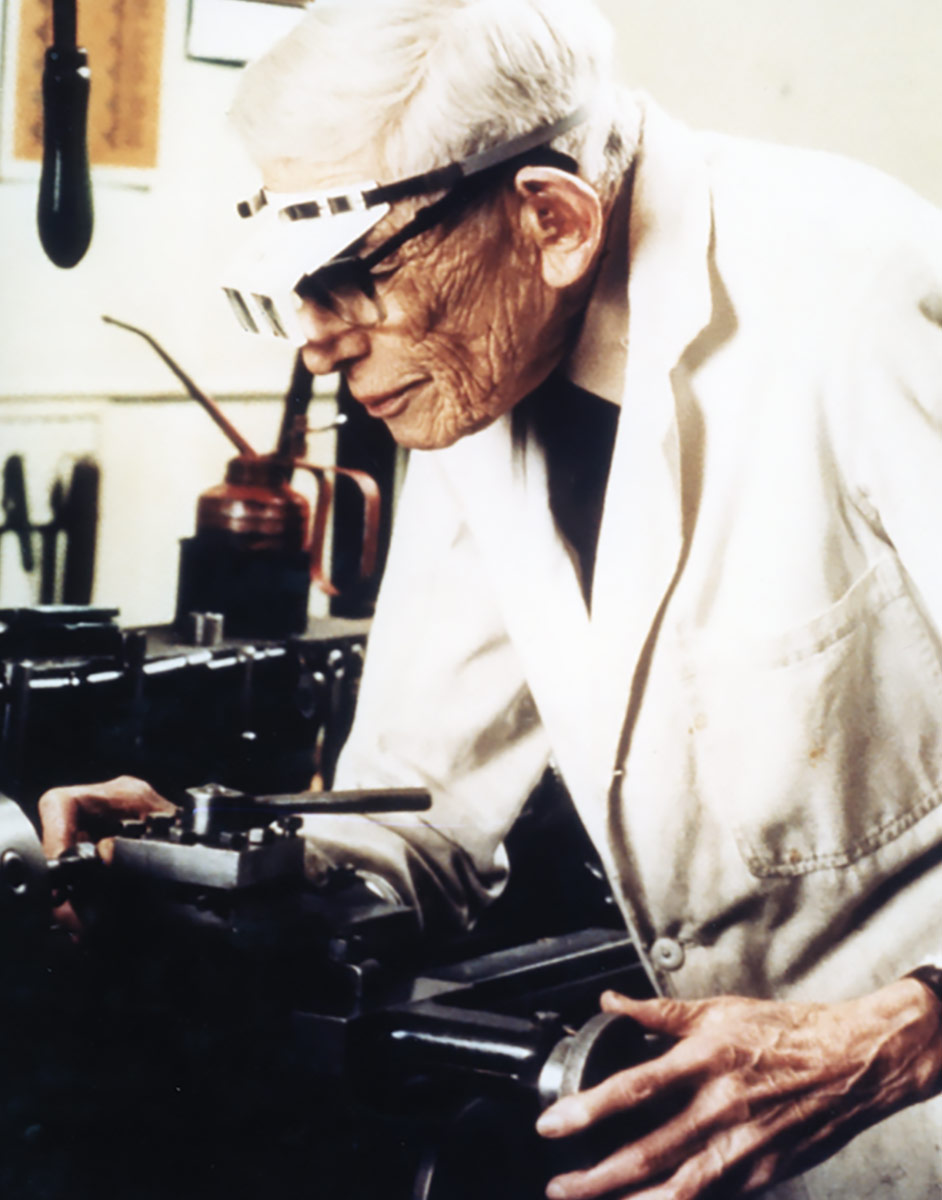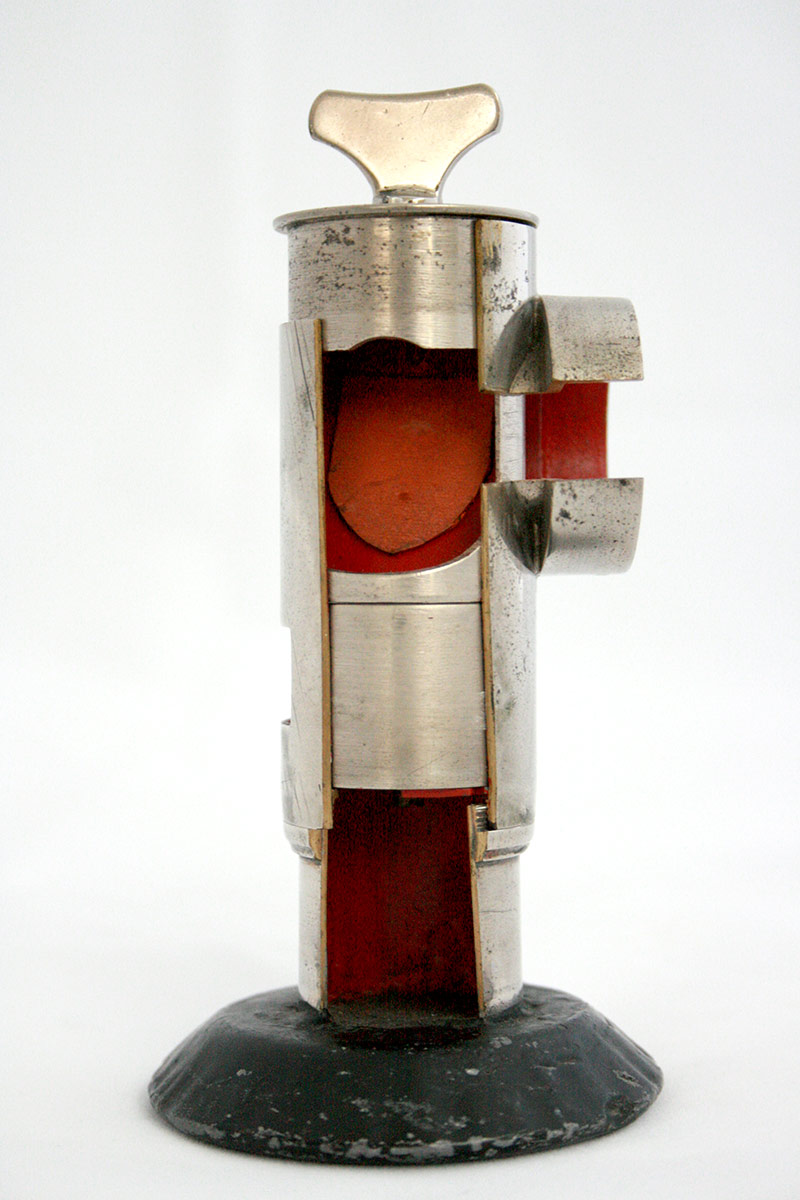Name: Geoffrey Kaye
Qualifications:
MBBS University of Melbourne (1926)
MD University of Melbourne (1929)
DA University of Melbourne and RCP&S (1939)
Date of Birth: 9 April 1903
Date of Death: 28 October 1986
Melbourne-born anaesthetist Geoffrey Kaye was a pioneer in the fields of Australian anaesthetics and anaesthetic apparatus design. After graduating from the University of Melbourne MBBS program, Kaye worked at the Alfred Hospital, Melbourne. It was here his interest in anaesthetics began. During his career he published over 200 works on anaesthetics, including the first Australian textbook, Practical Anaesthesia. During World War II he served in the Australian Army Medical Corps sharing his expertise to aid in medical training. His contributions to the field have been recognised through honorary Fellowships in both Australia and England. His legacy continues through the Geoffrey Kaye Museum of Anaesthetic History.
Can you add any details to this biography?
If so, complete the Contributor Form.
Geoffrey Kaye was born in 1903 in St Kilda, Melbourne. His family shortly moved to England where he was educated at Peterborough Lodge School, Hampstead, Gresham’s School, Holt, and Norfolk. His final year of secondary school was to be completed in Melbourne. Kaye completed his MBBS in 1926 and his MD in 1929 both at the University of Melbourne. During his residence as medical officer at the Alfred Hospital in 1927, Kaye turned his attention to anaesthetics. He was appointed an honorary anaesthetist at the Alfred Hospital in 1930.
Kaye was devoted to studying anaesthetics embarking on many oversees journeys to witness firsthand the development of anaesthetics in various countries. Included in his itinerary were the United Kingdom, Germany, Scandinavia, and North America. On return to Australia in 1931, Kaye began experimenting with anaesthetic equipment, engineering new and more efficient designs. He edited the first Australian textbook on Anaesthesia, Practical Anaesthesia, in 1932. Due in part to his lobbying, the Australian Society of Anaesthetics was established in 1934. He served as its first secretary until 1946. Kaye was also appointed a part-time lecturer at the University of Melbourne in 1937. On top of his work with the Society and University, Kaye was able to find time to complete a Diploma of Anaesthetics at the University of Melbourne in 1939.
One of Kaye’s greatest legacies is his contributions to the Australian Army Medical Corps during World War II.
He was ranked a captain in the Australian Army Medical Corps serving in the Middle East as anaesthetics advisor to the Australian Infantry Division Kaye designed medical equipment for the Australian Forces and trained personnel in the theatres of war on how to repair equipment and treat casualties. He returned to Melbourne in 1943.
Kaye was elected an honorary life member of the ASA in 1964. Two years later he collaborated with Robert Orton and Douglas Renton to publish Anaesthetic Methods, another crucial textbook to anaesthetist training. His illustrious career meant Kaye was elected a Fellow of the Faculty of Anaesthetists in 1949 and later a foundation Fellow of the RAC’s faculty of anaesthetists in 1952.
Kaye’s passion for design and anaesthetic equipment production led to the development of a museum. Kaye himself was curator from 1939 until 1955. The museum served two primary roles – to teach future anaesthetists and to present the heritage of the industry. In 1957, Kaye resigned his FARACS Fellowship.
During his career Kaye published over 200 articles and books within and outside Australia. He accepted the Faculty’s Orton Medal in 1973 and Honorary Fellowship of the Faculty in 1977. He died on October 28, 1986 in East Melbourne. His legacy continues through the museum and the continued display of his objects.
REFERENCES
[i] Geoffrey Kaye, ‘Exordium’, Admission Form, 1952, Geoffrey Kaye Museum of Anaesthetic History: VKGM 6903.9; Australian Military Forces, ‘Attestation Form for Special Forces Raised for Service in Australia; Kaye, Geoffrey Alfred’, National Archives of Australia, Canberra, 1939, Series No. B883 VX357.[ii] R. N. Westhorpe, ‘Geoffrey Kaye – a man of many parts’, Anaesthesia and Intensive Care, 35, Supp 1 (2007): 3.[iii] John Paull, ‘The Museum has Landed’, 2014, Online: http://medicine.unimelb.edu.au/__data/assets/pdf_file/0003/1506108/Chiron_2014.pdf; Geoffrey Kaye, ‘Exordium’, Admission Form.[iv] Geoffrey Kaye, ‘As I Remember it’, Manuscript, Geoffrey Kaye Museum of Anaesthetic History: VKGM 6906, p. 2.[v] Ibid.[vi] Anaesthetic Staff of the Alfred Hospital, Melbourne, Practical Anaesthesia (Glebe: Australasian Medical Publishing co., 1932).[vii] Geoffrey Kaye, ‘As I Remember it’, VKGM 6906, p. 43.[viii] Geoffrey Kaye, ‘As I Remember it’, VKGM 6906, p. 103; University of Melbourne, ‘University of Melbourne Calendar 1937’, Calendar, Online: http://hdl.handle.net/11343/23406.[ix] Geoffrey Kaye, ‘Exordium’.[x] Australian Military Forces, ‘Attestation Form for Special Forces Raised for Service in Australia; Kaye, Geoffrey Alfred’.[xi] Australian Society of Anaesthetists, ‘Minutes of the Twenty-Second Annual General Meeting’, Meeting Minutes, 17th August 1964, ANZCA Archives, Series 11.[xii] Geoffrey Alfred Kaye, Robert H. Orton, and Douglas G. Renton, Anaesthetic Methods (Ramsay: Melbourne, 1946).[xiii] Geoffrey Kaye, ‘As I Remember it’, VKGM 6906, p. 82; The Royal College of Anaesthetists, ‘Dr Geoffrey Kaye’, 2015, Online: https://www.rcoa.ac.uk/lives-of-the-fellows/dr-geoffrey-kaye; Geoffrey Kaye, ‘Exordium’.[xiv] Paull, ‘The Museum has Landed’, 2014.[xv] Australian and New Zealand College of Anaesthetists, ‘Robert Orton Medal’, 2015, Online: http://www.anzca.edu.au/about-anzca/our-awards/robert-orton-medal.html.IMAGES
- Geoffrey Kaye Museum of Anaesthetic History, B5.S2.
- ‘Geoffrey Kaye presenting Orton Medal to Tess Brophy’, ANZCA Archives, Series 108, Item 1.
- ‘Unveiling of Memorial Plque to Peter H. Penn’, ANZCA Archives, Series 108, Item 8.
- ‘Conferring of Honorary FFARACS’, ANZCA Archives, Series 108, Item 7.
- Reference 5429.
- ‘Venous Pressure Manometer in brown case’, Geoffrey Kaye Museum of Anaesthetic History: VKGM 3172.
- ‘Hewitt’s stop-clock’, Geoffrey Kaye Museum of Anaesthetic History: VKGM 3211.

